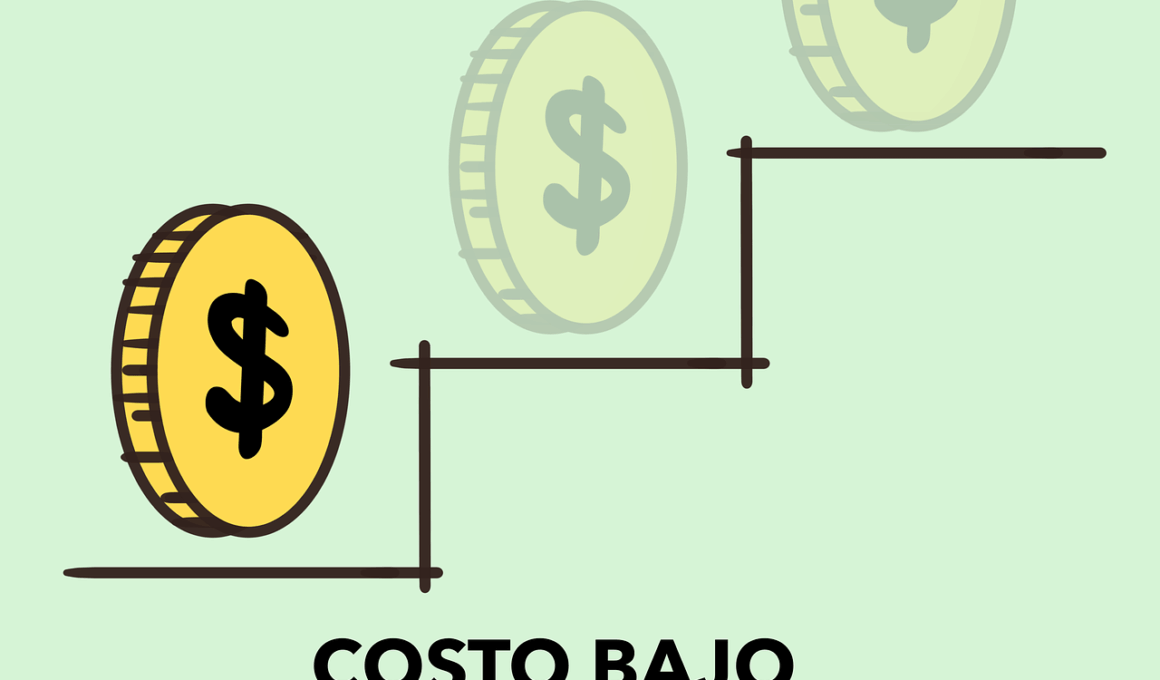Variable Costs Explained: Key Concepts and Applications
Variable costs are fundamental in the realm of cost accounting, representing expenses that fluctuate in direct correlation with a company’s production levels. When a business produces more goods, variable costs increase; conversely, when production decreases, these costs decline proportionally. Examples of variable costs include raw materials, direct labor associated with production, and sales commissions. Understanding the nature of variable costs is crucial for accurate budgeting, financial forecasting, and decision-making. Their variability allows businesses to strategically manage expenses according to production volumes, which can enhance profitability. This connection between production and costs is vital for businesses seeking to streamline operations and optimize pricing strategies. Analyzing variable costs helps firms determine break-even points and profit margins, making it essential for entrepreneurs and managers. Additionally, recognizing these cost dynamics enables businesses to plan for fluctuations in market demand effectively. By focusing on variable costs, companies can better align their resources and adjust operations in real-time to maintain financial health amid changing circumstances. Overall, a comprehensive understanding of variable costs is pivotal for any organization aiming to thrive in competitive environments.
The distinction between fixed and variable costs is crucial in cost accounting. Fixed costs remain constant regardless of production volume, while variable costs are dynamic, changing as output fluctuates. Identifying these two categories aids businesses in understanding their overall cost structure. This insight enables organizations to make informed financial decisions regarding budgeting, resource allocation, and pricing strategies. Moreover, analyzing how variable costs behave in relation to output is essential for forecasting and determining an optimal production level. Businesses can utilize tools like variable cost analysis to monitor cost behavior, enabling proactive decision-making. This process involves tracking variable expenses over time to identify trends and making adjustments based on production forecasts and market demands. Furthermore, it is essential to incorporate variable costs into pricing strategies to ensure profitability without sacrificing market competitiveness. Managers often gauge the contribution margin, which measures how sales affect variable costs, to assess financial performance. Knowing the impact of variable costs allows businesses to optimize operations and maintain rigorous control over financial outcomes, ensuring sustainable growth and profitability.
Determining Variable Costs
To accurately determine variable costs, businesses must analyze costs associated directly with production activities. This often involves systematically collecting and categorizing expenditures that vary based on output levels. For instance, consider a manufacturing company; variable costs typically include expenses such as direct materials, direct labor, and variable overhead. Tracking these costs over time can reveal patterns that inform production decisions and cost management strategies. In some cases, businesses may utilize cost accounting software to streamline the tracking process, ensuring real-time visibility of variable costs. Additionally, allocating overhead costs appropriately enhances the accuracy of cost analysis, allowing businesses to allocate fixed and variable costs correctly. Engaging in variance analysis also proves essential as it compares expected variable costs with actual figures, providing valuable insights into operational efficiency. Anomaly detection becomes critical in identifying unexpected fluctuations, enabling timely corrective actions. In collaborative environments, establishing a clear understanding of who is responsible for variable costs across different operations fosters accountability and drives effort toward cost minimization. Overall, precise determination of variable costs lays the foundation for effective cost management and financial performance.
Another significant aspect of variable costs is their influence on pricing strategies. When setting prices, businesses must consider not only fixed costs but also the variable costs associated with producing goods or services. By understanding variable costs, companies can establish pricing tiers that reflect production expenses while remaining competitive in the market. This understanding plays a pivotal role in determining how much margin a company can maintain after covering its variable costs. Additionally, variable costs impact decisions regarding discounts, promotions, and sales strategies. During periods of increased demand, firms may adopt lower prices based on their variable cost structure, driving sales volumes while maintaining profit margins. Conducting a break-even analysis helps assess how variable costs interact with sales forecasts to understand the minimum sales required to cover costs. The rationalization of such pricing strategies ultimately aims to maximize profitability while ensuring market share. Companies equipped with a solid grasp of their variable costs are better prepared to navigate market dynamics and respond swiftly to consumer demands, resulting in improved business performance and enhanced competitive positioning.
Control and Management of Variable Costs
Effective control of variable costs is paramount for businesses aiming to enhance their financial performance. To manage these costs effectively, organizations must establish strict monitoring systems that track variable expenses throughout the production cycle. Regularly analyzing cost reports ensures that management stays informed about fluctuations in variable costs. Implementing a cost-control system helps businesses identify areas where costs can be reduced without compromising quality. This may entail negotiating better rates with suppliers, optimizing resource utilization, or exploring alternative materials that maintain quality standards at lower costs. Moreover, setting benchmarks for variable costs allows businesses to measure performance against industry standards, promoting continual improvement. Engaging employees in cost management initiatives often results in innovative ideas for reducing variable expenses. Training staff to recognize the significance of variable costs fosters a cost-conscious culture within the organization, ensuring long-term sustainability. Continuous improvement efforts to manage variable costs are essential for maintaining a competitive edge. By prioritizing variable cost control, companies position themselves to maximize profitability while navigating the inherent uncertainties of production fluctuations.
Variable costs also carry essential implications for forecasting and budgeting activities. Accurate forecasting of variable costs is vital for effective business planning, encompassing resource allocation and financial projections. Businesses must rely on historical data to anticipate future variable expenses accurately. Employing forecasting techniques, such as regression analysis, enables organizations to predict variable costs based on output levels. Additionally, establishing standard costs for various production levels can significantly streamline budget preparation processes. Managers can use these standards to guide decision-making, ensuring they remain in line with forecasted costs. When budgets incorporate variable costs, companies can make data-driven adjustments to spending as production needs change. This alignment helps organizations remain agile amid fluctuating market conditions while managing their expenses efficiently. Moreover, adjusting budgets based on anticipated variable costs ensures accurate profit assessments, creating a sustainable framework for growth. Organizations that effectively forecast variable expenses can respond proactively to economic shifts, enhance profitability, and mitigate the impact of fluctuating production costs on overall financial health.
Real-World Applications of Variable Costs
Real-world applications of variable costs extend across industries, influencing several operational decisions and strategies. In manufacturing, understanding variable costs is crucial for assessing production feasibility and identifying opportunities for cost reductions. For example, a furniture manufacturer may analyze the variable costs associated with various wood types, enabling informed selections that balance quality and expenses. In service industries, variable costs affect pricing models and service delivery structures. For instance, a landscaping business may incur variable costs related to labor and materials, requiring careful estimation when setting project prices. Companies engaged in project-based work find variable costs particularly relevant as they fluctuate with project scope and resources. Retail businesses also leverage variable cost insights during seasonal promotions, determining optimal pricing strategies based on anticipated sales volumes. The hospitality sector evaluates variable costs in staffing and supplies, adjusting operations according to occupancy levels and guest demands. Ultimately, understanding variable costs equips organizations with the insights required to make strategic decisions that enhance operational efficiency and increase profitability across a diverse array of industries.
The assessment of variable costs in relation to performance metrics emboldens organizations to evaluate their financial health. For instance, analyzing the contribution margin reveals how much revenue from sold products contributes to covering variable costs. This metric can directly influence product line decisions, affecting whether companies continue offering specific items based on their profitability potential. By scrutinizing variable costs, organizations can identify which products yield the highest contribution margins, guiding future investments and marketing initiatives. Moreover, various pricing strategies hinge on accurate variable cost assessments to ensure they achieve desired profit levels while remaining competitive. When companies understand their variable cost structure, they can also establish clear benchmarks for evaluating employee performance in production roles. Performance assessments tied to cost efficiency encourage a culture of accountability and innovation. Ultimately, the systematic evaluation of variable costs lays the foundation for strategic planning and reinforces sustainable business growth. Companies that adeptly analyze and utilize variable cost data position themselves to thrive in competitive and varied market environments, attaining long-term success.


